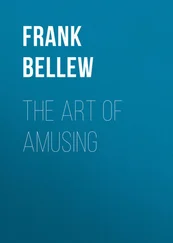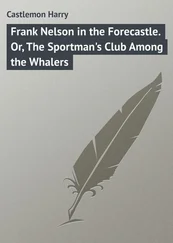Frank Abagnale - The Art of the Steal
Здесь есть возможность читать онлайн «Frank Abagnale - The Art of the Steal» весь текст электронной книги совершенно бесплатно (целиком полную версию без сокращений). В некоторых случаях можно слушать аудио, скачать через торрент в формате fb2 и присутствует краткое содержание. Год выпуска: 2001, ISBN: 2001, Издательство: Broadway Books, Жанр: Старинная литература, на английском языке. Описание произведения, (предисловие) а так же отзывы посетителей доступны на портале библиотеки ЛибКат.
- Название:The Art of the Steal
- Автор:
- Издательство:Broadway Books
- Жанр:
- Год:2001
- ISBN:9780767910910
- Рейтинг книги:4 / 5. Голосов: 1
-
Избранное:Добавить в избранное
- Отзывы:
-
Ваша оценка:
- 80
- 1
- 2
- 3
- 4
- 5
The Art of the Steal: краткое содержание, описание и аннотация
Предлагаем к чтению аннотацию, описание, краткое содержание или предисловие (зависит от того, что написал сам автор книги «The Art of the Steal»). Если вы не нашли необходимую информацию о книге — напишите в комментариях, мы постараемся отыскать её.
The Art of the Steal — читать онлайн бесплатно полную книгу (весь текст) целиком
Ниже представлен текст книги, разбитый по страницам. Система сохранения места последней прочитанной страницы, позволяет с удобством читать онлайн бесплатно книгу «The Art of the Steal», без необходимости каждый раз заново искать на чём Вы остановились. Поставьте закладку, и сможете в любой момент перейти на страницу, на которой закончили чтение.
Интервал:
Закладка:
He deposited the check by opening up an account at Bank Boston. They told him there was a five-day hold period, and he said that was no problem. He didn’t return for twelve days, at which time he withdrew all but a hundred dollars. Sixty-two days later, an auditor at Forbes caught the forged check, but by then it was a little late. The writer then crafted a story for Forbes about check fraud, in which he revealed the details of his own little charade. Forbes put a picture of the fraudulent check on its cover.
This little caper is called scanning, and it’s one of the most popular forms of forgery and certainly the simplest. Scanning started to emerge as a problem in the early 1990s, and it has really caught on significantly in recent years.

In Springfield, Mass., a man changed a $3.00 refund check from L.L. Bean into one for $30,000. Then he changed a $2.39 bakery refund check for stale cinnamon buns to one for $15,552.39. In North Carolina, a well-dressed young man convinced an automobile dealer to accept a cashier’s check for $50,000 from Wachovia Bank, in exchange for a new Mercedes 300SC. It happened to be six in the evening, when the bank was closed, but the dealer was not about to turn away a nice piece of business. Little did he know that the cashier’s check had originally been made out for $5.00 and altered to $50,000, and that before the bank opened the next day the car would be two states away, with fake license plates and a new paint job.
DO YOUR BANKING WITH THE IRS
And sometimes, you don’t even need all that technology. For example, people always seem to require extra cash around tax time, and criminals are no exception. So they get it from you. Say you’ve had your tax returns prepared and, like most of us, you owe the IRS some additional money. For argument’s sake, let’s say it’s $1,500. You sign your return, insert a check made out to the IRS for $1,500, and drop it in the mail. As far as you’re concerned, that ends the pain for another twelve months.
Not quite. The pain actually just doubled. Your package was “lifted” while in transit to the IRS. Envelopes to the IRS are common targets because of where they’re going. The check was removed and the rest of the return trashed. With a few pen strokes, the thief easily altered the check so that it was made out to a Mrs. Smith, and deposited it into a fake account. All he did was change “IRS” to “MRS” and add “Smith” to the payee line. Not only did you lose the $1,500, but you still owe the IRS another $1,500, plus late charges. Talk about double taxation.
WHAT TO DO
The easy solution is to fill out the entire payee line. If you had written “Internal Revenue Service” instead of “IRS,” this scam would not have worked.
SURE, YOU CAN TRY THIS AT HOME
Today, forgers drive around in industrial parks where there are big office buildings, and look into those large mailboxes standing in the parking lot. They’ll tell you that five years ago, they used to have to fish into those mailboxes, sending a line down and yanking the mail out, but they don’t have to anymore. Today, they drive up at a little after five in the afternoon, and there’s so much mail stuffed inside that it’s literally flowing out of the box. They just reach out of the car window and scoop it up. Any reasonable quantity of mail will always contain at least one envelope with a window in it that says, “Pay to.” Inside is a check payable to a construction company or a public relations firm—it doesn’t really matter who it’s addressed to. It’s not going to them anymore.
The odds are it’s a laser check, and that’s just what forgers want. Just about every company in America, no matter how big or small, has moved from a matrix printer to a laser printer to disperse payroll and accounts payable checks. It’s faster, it’s cleaner, and it’s more efficient. With a laser printer, these companies can buy blank check paper, lay it in the cassette, and actually print the entire check—the company logo, the bank’s logo, the routing numbers, the account number, even the signature.
Now a laser printer is a non-impact printer—in other words, there’s no ink put into the paper. A matrix printer shoots ink into the paper. A jet printer puts ink into the paper. A typewriter puts ink into the paper via the ribbon. With a laser printer, toner is applied to the paper by heat, so the toner is sitting on top of the paper. Which is why we call it non-impact printing.
Years ago, when criminals stole, say, a thirty-thousand-dollar check made out to a construction company, they would bring it to a forger and explain that they wanted the forger to get rid of the payee name, so they could type in a new name and cash the check. Fine, the forger said, it’ll be done in two weeks. The criminal was aghast. Two weeks? The forger said, hey, you’re asking me to move ink off of paper. He had to extract the ink using bleaches, solvents, acetones, hydrochlorides, polarized chemicals, non-polarized chemicals. He had to take each letter, and do it slowly, or else the check would become abrasive and you’d notice it.
With today’s laser checks, criminals have devised a new methodology. They take a piece of Scotch tape—the gray, cloudy kind that doesn’t rip the paper when you peel it off—and put it over the dollar amount and over the payee name. They use a fingernail to rub it down hard over the check, and then lift the tape off. The dollar amount and the name and the address will come off on the tape. The toner attaches to the Scotch tape and gets pulled from the fiber of the paper. If there’s any laser toner residue left over, a little high-polymer plastic eraser will take care of that. Sometimes forgers use dental picks, razor blades, or dry ice to remove the toner, but Scotch tape works quite nicely.
People are shocked when I tell them this, and then they go back and try it and sure enough that’s what happens. So any idiot can take a strip of tape and remove the nine dollars off a check and type in nine thousand or ninety thousand.
And that’s what the forger collecting the mail does. He uses tape to remove the payee’s name and address, and of course, the amount. He types in his name and the amount he wants, and deposits it at the bank. Sixty days later, the construction company that was supposed to get the check calls the payer and says that it hasn’t gotten its money. The payer calls the bank, but it’s too late. The money is long gone.
It’s that simple, because we make it that simple.
REVENGE OF THE SCIENCE GEEK
Forgers must have all had chemistry sets as kids, because another thing they love to do is to chemically alter checks. It used to be that the only chemical banks had to worry about was bleach. If banks used bleach-sensitive paper, they’d be protected. Today no forger uses bleach. Instead, all sorts of simple chemicals, like acetone, are used to modify checks. What’s the product of choice from which to get acetone? Nail polish remover. It’s 99 percent acetone.
If someone mails me a check today for nine dollars, but they’re a Fortune 500 company and I know that they have a bit more than that in the bank, I do a little chemistry experiment. I take that check, put Scotch tape over the signature of the controller, put tape on the back of the check where the signature would be on the front, lay that check in a cake pan, take some nail polish—no other ingredient—and pour that bottle of nail polish over the check. In a matter of seconds, everything that was put there by a typewriter, laser printer, jet printer, matrix printer, ballpoint pen, or flair pen is off the check. Because acetone removes anything that’s not a base ink. So the company’s logo, the bank name, the check number, and the borders of the check will stay. But anything that’s typed on or printed on by a laser printer disappears within fifteen minutes. It’s called washing the check.
Читать дальшеИнтервал:
Закладка:
Похожие книги на «The Art of the Steal»
Представляем Вашему вниманию похожие книги на «The Art of the Steal» списком для выбора. Мы отобрали схожую по названию и смыслу литературу в надежде предоставить читателям больше вариантов отыскать новые, интересные, ещё непрочитанные произведения.
Обсуждение, отзывы о книге «The Art of the Steal» и просто собственные мнения читателей. Оставьте ваши комментарии, напишите, что Вы думаете о произведении, его смысле или главных героях. Укажите что конкретно понравилось, а что нет, и почему Вы так считаете.












